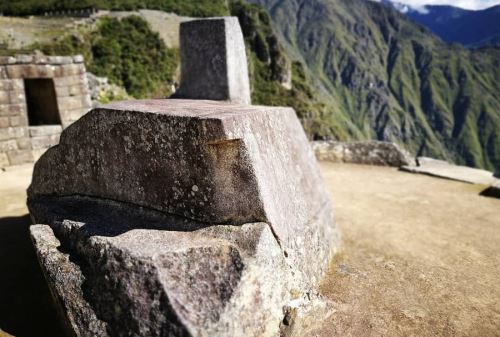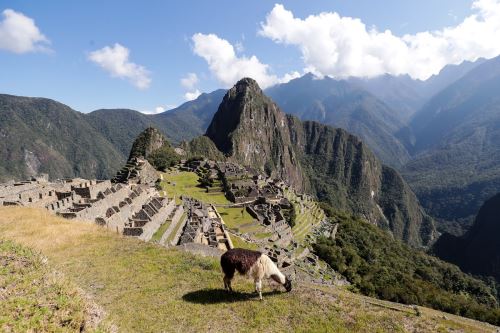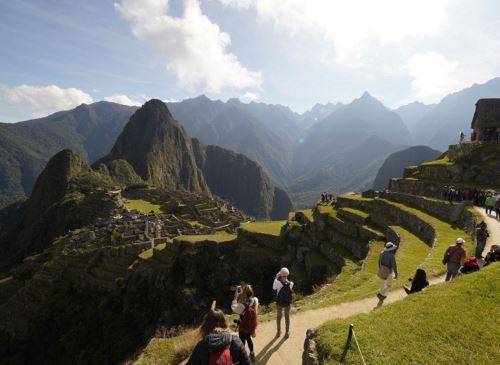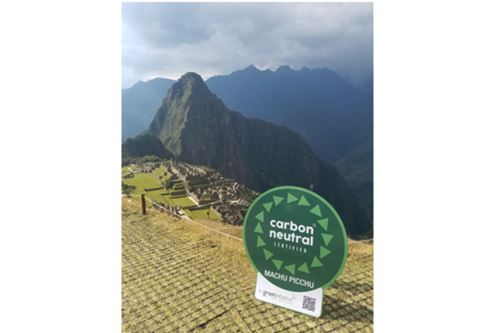09:02 | Urubamba (Cusco region), Jul. 7.
The powerful magnetism that
Machu Picchu exerts on travelers from around the world is evident not only in the exponential demand for tickets to enter the Inca citadel, but also in the countless photographs, videos, reviews, and comments that show the enchantment of tourists who manage to visit the marvelous Inca citadel.
Why is Machu Picchu considered one of the most captivating destinations in the world? What surprising features do tourists highlight when visiting this formidable historic sanctuary and archaeological park? What aspects are emphasized by important organizations such as UNESCO, Green Initiative, and others?
Captivating destination
One of the first impressions shared by travelers and tourists who arrive at or wish to visit Machu Picchu is its astonishing location on top of a steep mountain in a hinge zone between the Andes and the Peruvian Amazon, as well as the altitude at which it is found: 2,340 meters above sea level.
Another consistently highlighted aspect is its design and construction, which make Machu Picchu one of the great masterpieces of Inca architecture and engineering.
There are around 196 tourist points within the citadel, including archaeological complexes, plazas, temples, water fountains, monuments, and residences —all interconnected with one another and with the natural environment.
Walking through Machu Picchu, one can observe two well-defined sectors divided by a wall approximately 400 meters long. One is oriented toward agricultural purposes, and the other has an urban design.
The agricultural area is characterized by the presence of terraces or andenes that were used to cultivate various crops. Very close to this area are some small dwellings that may have housed the farmers.
Meanwhile, in the urban core, one finds the Royal Residence, characterized by its refined architectural design, larger size, and better structural distribution.
One can also see the Sacred Plaza —the city's main ceremonial venue—; the Intihuatana or solar clock —a type of truncated pyramid-shaped monolith—; the Three Doorways —a group of buildings formed by three large gateways—; and the Temple of the Condor, which likely had a ceremonial use.

To this day, it remains a source of wonder how the Incas managed to transport the enormous and heavy stones from the Urubamba (or Vilcanota) River and from other quarries, hauling them up the steep and rugged path to the top of the mountain without knowing the wheel, without iron, and without having large pack animals.

Another mystery without an easy answer is how the Incas managed to install aqueducts that transport and supply vital water to the Inca citadel, aqueducts that still function today.
Through a complex network of channels, aqueducts, and innovative underground drainage systems, the Incas managed to supply water to the population of the citadel.

As if these features were not enough, studies have determined that Machu Picchu was built between two geological faults running through the mountain it rests on. Yet it has remained firm over time.
Inca engineers and architects achieved an earthquake-resistant construction considered an unprecedented human feat.
A visit to Machu Picchu also offers the opportunity to see another mountain situated behind it: Huayna Picchu, which is higher and houses the Temple of the Moon —another religious center of worship in the Inca Empire.
What does UNESCO highlight about Machu Picchu?

Moreover, Machu Picchu has a protection and management system that must ensure its preservation.
Criterion I states that the Inca citadel is "a masterpiece of art, urbanism, architecture and engineering of the Inca Civilization. The working of the mountain, at the foot of the Huayna Picchu, is the exceptional result of integration with its environment, the result of a gigantic effort, as if it were an extension of nature."
Meanwhile, criterion III highlights that "Machu Picchu is a unique testimony of the Inca Civilization and shows a well-planned distribution of functions within space, territory control, and social, productive, religious and administrative organization."
For its part, criterion VII emphasizes that "the historic monuments and features in the Historic Sanctuary of Machu Picchu are embedded within a dramatic mountain landscape of exceptional scenic and geomorphological beauty thereby providing an outstanding example of a longstanding harmonious and aesthetically stunning relationship between human culture and nature."
Sustainable destination

Machu Picchu holds two certifications —obtained in 2021 and 2024— as a "Carbon Neutral Destination," placing this Peruvian tourist destination at the forefront of environmental sustainability and the fight against the effects of climate change.
To earn this recognition, the Historic Sanctuary of Machu Picchu adopted effective measures to reduce its carbon footprint and offset the remaining emissions, implementing sustainable practices such as solid waste management and promoting a circular economy.
The certification used 2019 carbon emissions data as a baseline and focused on encouraging actions for the reduction, treatment, and proper management of generated waste. It also included raising awareness among local residents, businesses, and hotels.
As part of this effort, four processes were implemented to reuse recoverable waste: the installation of a PET plastic and cardboard compactor plant; a biodiesel plant to process waste oils from restaurants and casinos; a pyrolysis plant for organic waste that generates natural charcoal; and two glass-crushing machines to turn bottles into sand for construction and ornamental use.
This circular economy model gives new life to recoverable waste such as plastic, cardboard, Tetra Pak containers, and glass, along with the treatment of used cooking oil.
(END) LZD/MAO/JMP/MVB
Published: 7/7/2025